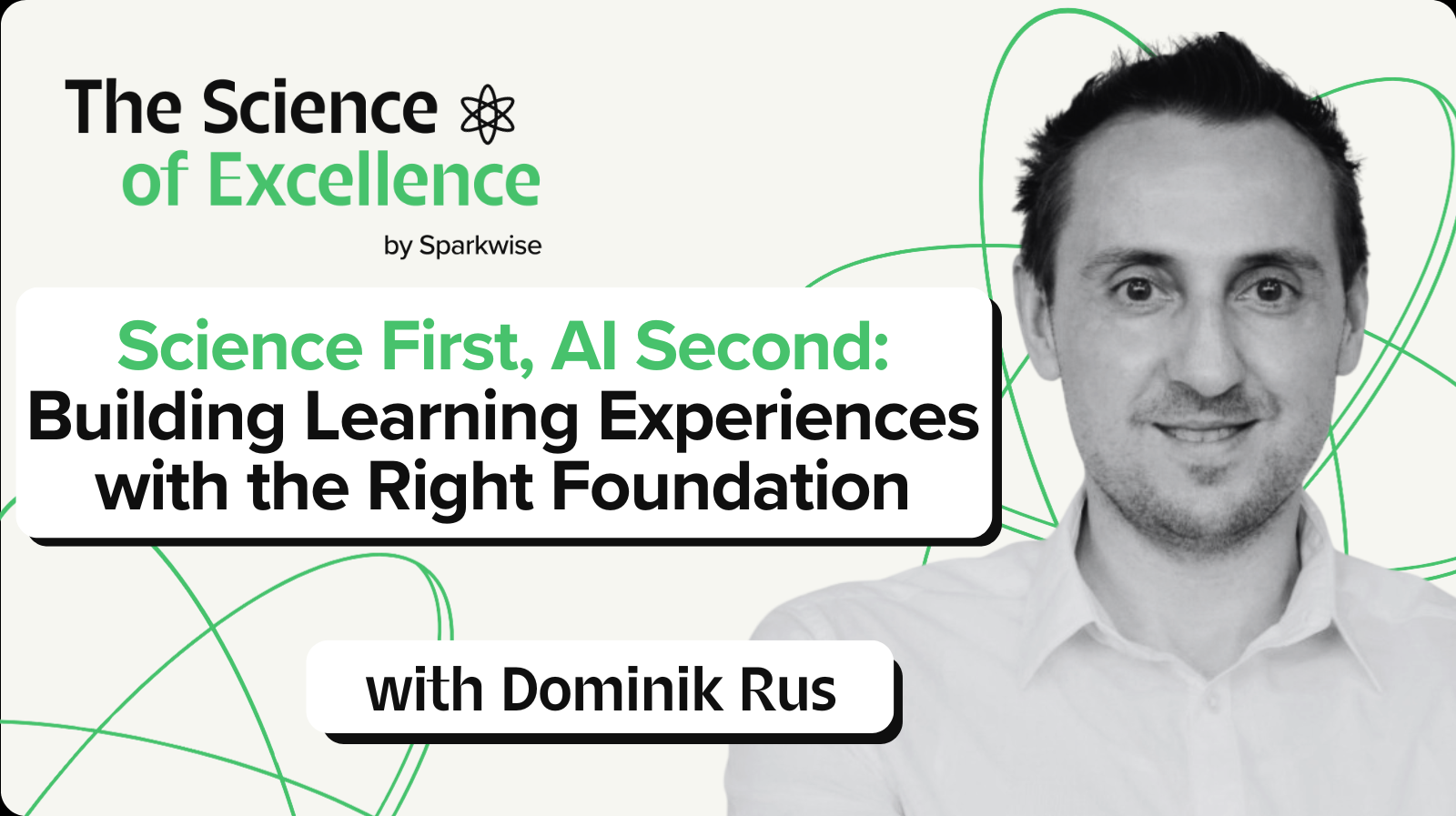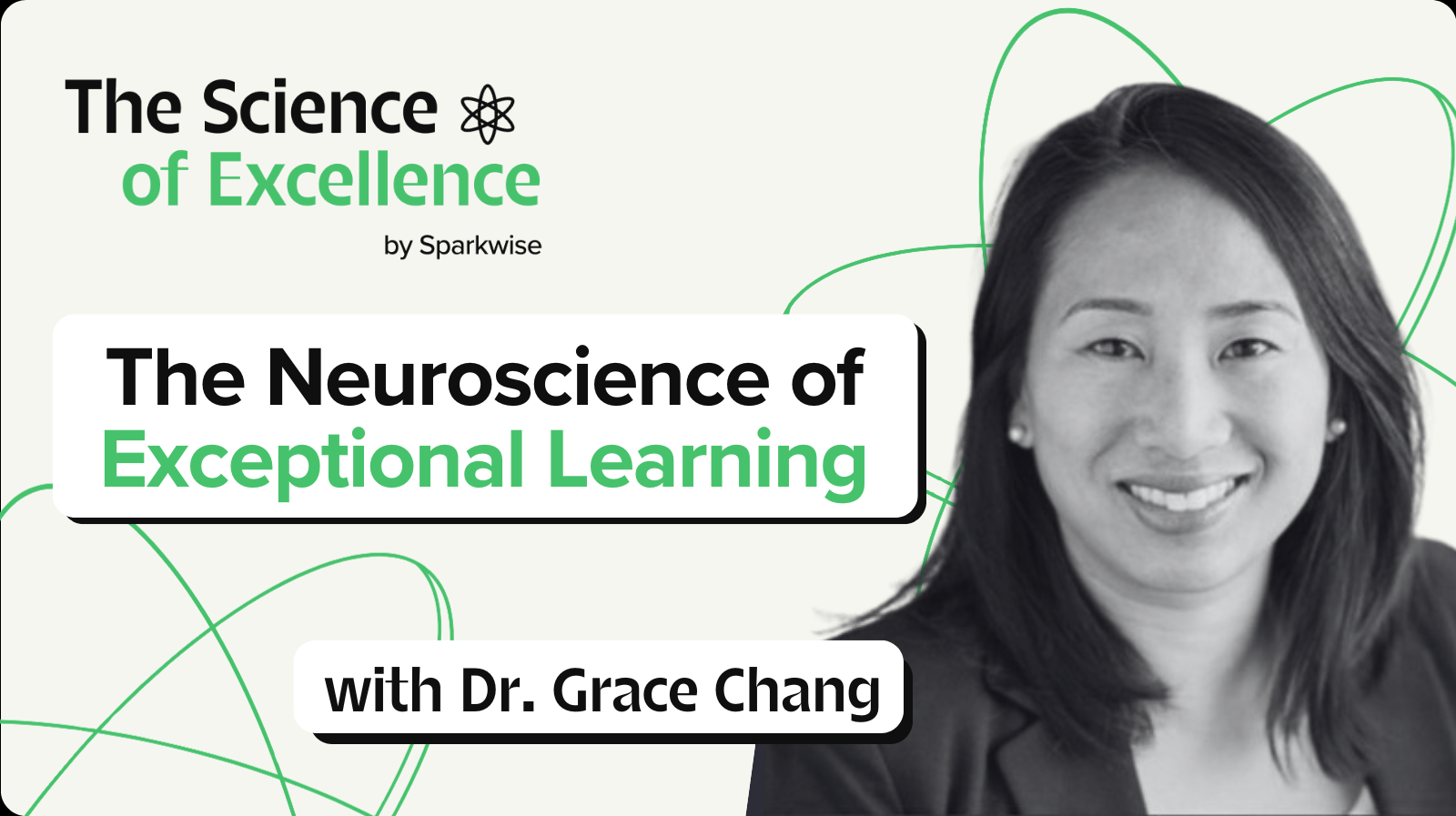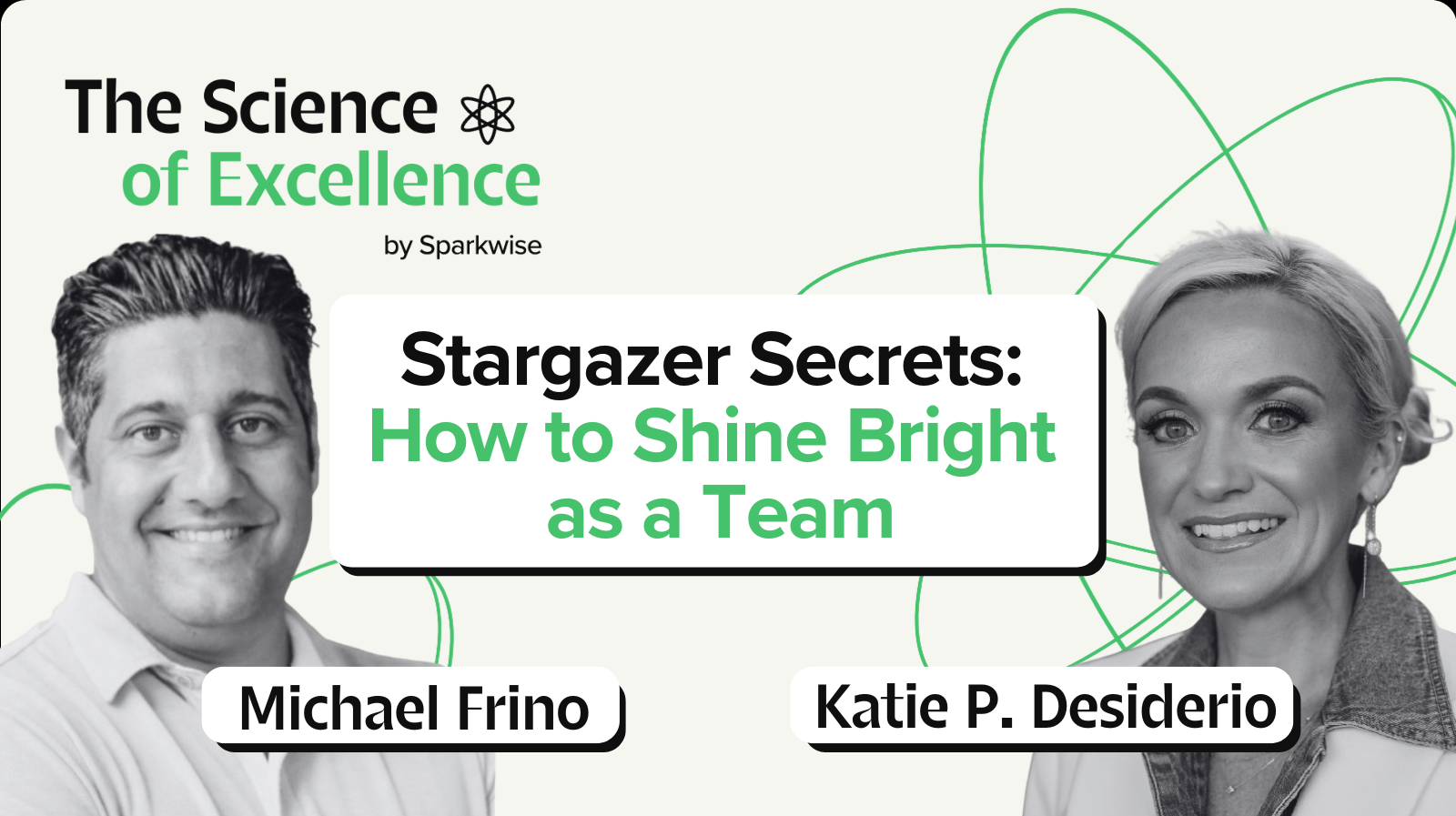In this episode of The Science of Excellence, I sat down with Dominik Rus, Global Head of L&D Innovation and Technology at TTEC, who presented "Science First, AI Second: Building Learning Experiences with the Right Foundation." His core argument: before augmenting learning with AI, we need to understand the fundamentals of how people actually learn.
Dom is not too keen on L&D professionals who know little about learning theory but rush to implement AI solutions. Our conversation explored evidence-based learning principles and how Dom's team uses AI to amplify what actually works.
These 5 insights stood out from our conversation:
- Master Learning Science Before Technology
- Apply the Mindset-Skillset-Toolset Framework
- Use Self-Quizzing and Spaced Repetition
- Choose Tools That Make Learning Stick
- Build AI Systems Grounded in Research
1. Master Learning Science Before Technology
In Dom's Words: "Lawyers know the law, engineers know physics, but learning professionals know little to nothing about learning science. You wouldn't want someone who's just passionate about the brain and neurology to operate on your brain, right? You would want someone who's actually practiced for years. So why don't we do the same in our learning profession?"
L&D professionals can sometimes lack foundational knowledge about how learning works. While other professions require deep understanding of their core science, learning professionals frequently operate on intuition and trends rather than evidence.
This knowledge gap becomes dangerous when amplified by AI. If you don't understand what makes learning effective, AI simply scales ineffective approaches faster. The solution is building genuine expertise in learning science before leveraging new tech.
2. Apply the Mindset-Skillset-Toolset Framework
In Dom's Words: "Don't go to the technologies, don't go after technology. Don't be tech forward or tech first. Let's start with the mindset. What is learning? What are the variables? How do people really learn? What is the ecosystem for learning that we're going after? Once you've gotten the mindset down, then you need to start thinking, okay, so what does my team need to know from the skills perspective?"
Most organizations approach learning technology backwards—they start with tools and work backward to outcomes. Dom's framework reverses this: establish your learning philosophy first, develop the skills to execute it, then select tools that support your approach.
This sequence prevents technology from driving learning design. When you start with mindset, you make informed decisions about what capabilities your team needs and which tools actually support effective learning rather than just offering appealing features.
3. Use Self-Quizzing and Spaced Repetition
In Dom's Words: "Research has shown over and over and over again that if you learn through quizzing—think of Duolingo. Why is Duolingo so popular? They throw you into this environment where you have to speak and press on things, you know, and you gotta practice through quizzing. So it's this constant quizzing. We forget about 75% within 24 hours. So how do you capture that in a learning design?"
Two of the most powerful learning techniques are also the most underused in corporate L&D. Self-quizzing forces active recall, which strengthens memory formation. Spaced repetition combats the forgetting curve by timing review intervals to reinforce learning just before it's lost.
Most corporate learning ignores these principles. Courses deliver content in linear fashion with minimal practice, then test knowledge once at the end. Dom's approach embeds frequent quizzing throughout the learning experience and schedules spaced repetition based on forgetting curve research.
4. Choose Tools That Make Learning Stick
In Dom's Words: "I hear this all the time at L&D conferences—people will say, 'how do you go about picking a new LMS?' And most advice is get what you need. I really don't like that advice. You get what works. You need to get the technology that really makes learning stick. I guarantee 95% of the 700 LMSs out there have not thought about building software that really makes learning stick."
Technology selection typically focuses on features, integrations, and user experience rather than learning effectiveness. Dom argues for evaluating tools based on whether they support evidence-based learning principles like spacing, practice distribution, and active recall.
This requires L&D professionals to understand learning science well enough to evaluate vendors critically. Most learning technology is built by people who know even less about learning theory than L&D practitioners, creating a cycle where ineffective approaches get amplified through better technology.
5. Build AI Systems Grounded in Research
In Dom's Words: "We built our own knowledge graph around learning science, and we also built over 50 different prompts on how each learning experience should be designed and developed. It's embedded and it's grounded in learning science. It's got every single thing you can imagine around memory and attention, and distribution and frequency spacing of practice."
Dom's team created AI-powered "learning wizards" that automate curriculum design while enforcing learning science principles. Their system doesn't just generate content faster—it ensures every design decision reflects evidence about memory, attention, and practice distribution.
The results are dramatic: design processes that took 4-8 weeks now take 2-3 days with human oversight. But the real innovation is embedding 150 years of learning research into the AI prompts, ensuring efficiency gains don't come at the expense of effectiveness.
Until next time,
Vince




.png)





.png)

.png)
.png)









.png)












.png)